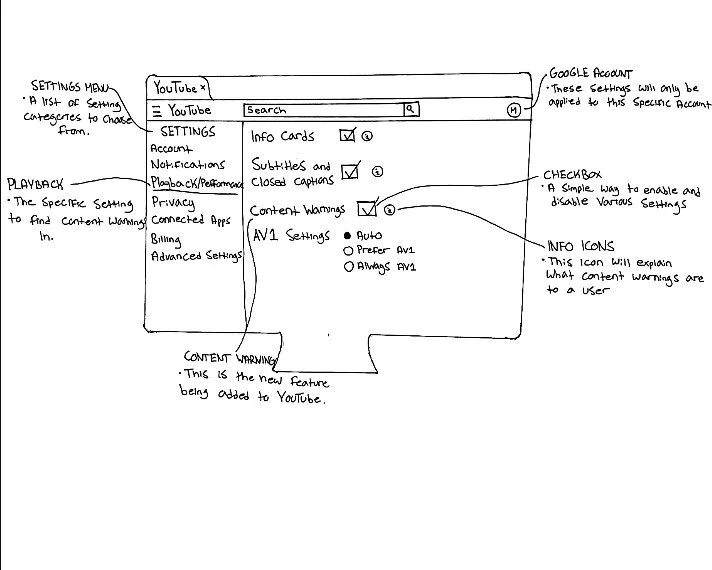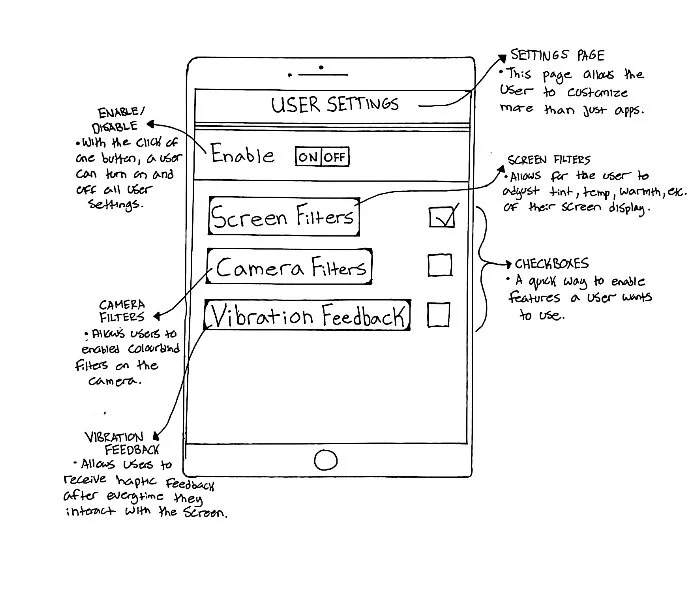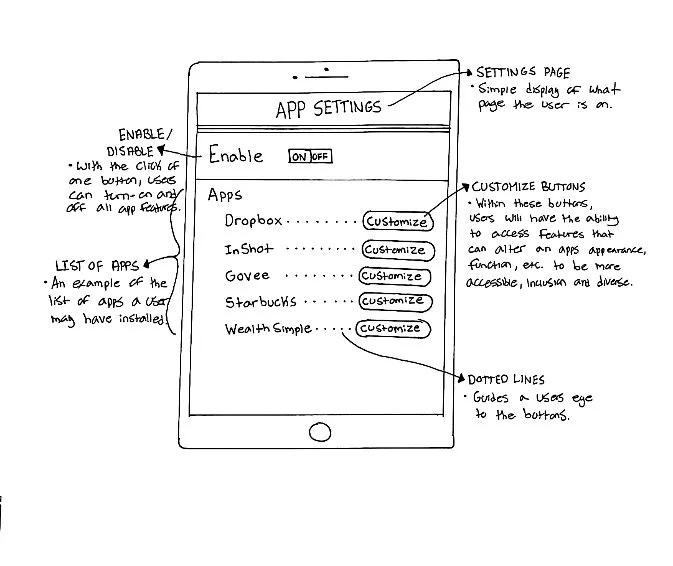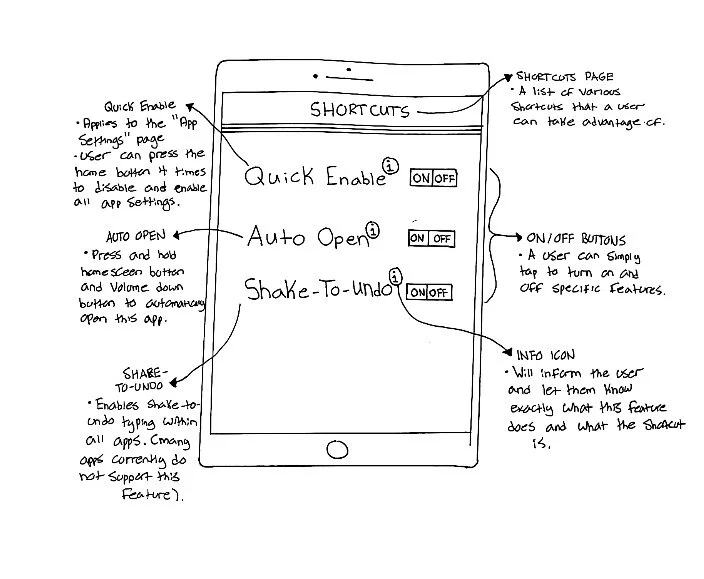Speculative Visualization Projects
Biography
Hi there!
My name is Mason. I am a 19-year-old User Experience Design student currently attending Wilfrid Laurier University, sited in Brantford, Ontario. I am working towards completing my Bachelor’s and obtaining a profession in UX Design. Throughout my entire life, I have had a passion for creation. Reflecting back years ago, I can still remember spending my free time on programs such as Photoshop, Illustrator, and After Effects. I have had the opportunity to work with a variety of clients, whether it be through the university, or through personal business. I hope to work with many more in the future.
If you would like to reach out, feel free to email me through the contact tab!
Speculative Visualization Project One.
iPhone Colourblind Filters.
Side View
Summary
The original design problem incorporated within the iPhone camera app was the lack of features that could be inclusive to the colourblind community. By including colourblind filters within the iPhone camera app, this allows for the colourblind community to share their visual experiences with others, in a creative and innovative way.
Description
With the colourblind community often being forgotten about when designing inclusively, this feature allows for them to share the way they see the world, with multiple filters such as protanomaly, deuteranomaly, tritanomaly, and achromatopsia. There are few options when it comes to colourblind community and inclusivity. These filters allow them to share their experience and for others to gain understanding.
Review
This all began with ideation and identification. I needed to figure out what social group is typically left out when designing. After previously working on a project regarding colourblindness, I found that this would be a great opportunity to expand on my knowledge of the topic and create something that could make a positive impact on their lives. I brainstormed on how this feature can be enabled and how it could effectively be implemented into the existing iPhone camera app. After deciding, I created a sketch to best represent my ideas.
Conclusion
Quickly after this project, I felt as though I had improved my abilities at designing inclusively. Knowing that two similar projects were upcoming made me realize how fast I could understand what it really means to be an inclusive designer. I would be able to use the knowledge that I gained through this first project to assist in designing my later creations.
Speculative Visualization Project Two.
YouTube Content Warnings.
Summary
The original design problem within the website and application, YouTube, was the lack of features that accommodated to individual viewers' mental health. A feature that many large social media platforms such as TikTok, Instagram, and Twitter have already incorporated into their applications are warnings. My goal with this project was to suitable implement content warnings into YouTube videos.
Description
Typically, content warnings make a viewer aware that upcoming content may be disturbing or may induce seizures to an individual, yet the closest thing to content warnings that YouTube has is age restrictions. By implementing proper warnings into videos (NOT creator made warnings), viewers that are highly susceptible to seizures due to flashing images/visually stimulating videos or viewers who are sensitive to graphic content will have to ability to enjoy YouTube videos, without the stress of what may be included in them.
Youtube Content Warnings.
Review
I started off by examining multiple popular applications in an attempt to discover features that hindered diversity. After reviewing many, YouTube seemed to be one that lacked not only one, but multiple features that would impede diversity. I chose to focus on content warnings as I have personally had to deal with videos that involve content that I simply would rather not view. This content typically had no warnings from the creator. I ran into the problem of how content warnings could effectively be implemented into YouTube, without altering the casual viewing experience. So, within the settings page, the content warnings were made to be enabled and disabled with a click of a button to ensure that other social groups are not inadvertently affected.
Conclusion
With this design and the previous design, I was ready to create my final synthesized design. But there was a lot to take away from these projects. As mentioned previously, after the first speculative visualization, I already felt as though I began to understand what being an inclusive designer means. After creating this design, I was really starting to get a grasp of it and had the ability of targeting social groups that are left out in design and making their experience more enjoyable and accessible.
Speculative Visualization Project Three.
Summary
My final new synthesized design represents both inclusion and diversity effectively. Individuals with disadvantages, may it be visually, haptically, mentally, etc. are all given the opportunity to customize their experience while using a mobile device to best suit their needs. The downloadable mobile application “Access iPhone” is a great way for users to have full customization of their device.
Access iPhone App.
Access iPhone App.
Description
This synthesized visualization has combined features from the two previous speculative visualizations such as the colourblind filters, content warnings, etc. in order to create an app that has extensive accessibility and diversity features, that can be applied to any app that is downloaded on a users iPhone. This takes inclusivity and diversity to a whole other level, as the standard iPhone accessibility features simply do not cut it.
Review
The design process of “Access iPhone” was quite different compared to the two previous speculative visualizations. Instead of starting fresh with new ideas, it was necessary to combine the ideas that I have previously come up with and create one final synthesized design. Speculative visualization one focused on creating colourblind filters within the iPhone camera app, while speculative visualization two focused on adding content warnings to YouTube. So, why not have all that in one application? Then, add an extensively larger amount of various accessibility features to it. This is an application that is created for the sole purpose of combating structural barriers, while providing equality for individuals who are not simply the “common user”.
Access iPhone App.
Access iPhone App.
Conclusion
After sketching out all of my ideas, I began to realize that I now know what an inclusive designer is. They look for solutions that do not just fit one social group, but all social groups. An inclusive designer creates and transforms products, devices, etc., and makes them in a way that is barrier-free. I can now take the skills that I have learned throughout the course of these speculative visualization projects and apply them in my remaining education and my future career.






